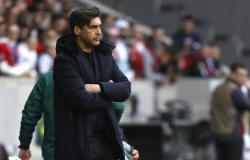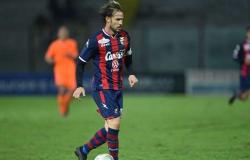
If one day you happen to take a trip to the Loire you certainly shouldn’t miss a visit to Thiré, the place where the Jardins du Bâtimenta wonderful place of the soul that took shape from a dream of William Christieharpsichordist, musicologist and orchestra director who performed last night in Cremona, as part of the forty-first edition of the Monteverdi Festival, leading his prestigious ensemble Les Arts Florissants. Christie himself tells of this enchanted place: “this garden is a ‘pastiche’, it bears the clear sign of my personality, and includes a collection of things that in my opinion go well together, are harmonious. In the garden, as with music, you are never alone”. And scrolling through the images of the elegant spirals of the Italian hedges, the volumes that alternate full and empty spaces in a sublime harmony, the perspective lines and the spots of color of the flowering shrubs, the importance and inseparable link between what blooms becomes very clear. , in nature as in music, in the creative horizon of this important precursor of performances now commonly called “HIP”, a phrase which for non-experts stands for “historical informed performance”, i.e. a way of performing music through the recovery of historical performance practice, faithful to the style of the era in which the piece was composed. The philological approach thus becomes an interpretation tool for any music around which documentary material exists, contextualising its raison d’être and designating it as a witness to the culture that generated it. In recent decades this attitude has taken hold to the point of becoming a real ‘faction’ that anyone who deals with musical things must deal with.
William Christie of this current, as we were saying, was a pioneer in times when the trend was still not very widespread, and today he stands as one of the greatest authorities at an international level. In the concert in Cremona the very large audience who came from all over Italy and beyond had the pleasure of listening to a selection of songs taken from the Moral and spiritual forestand, an anthology of sacred and profane pieces, the culmination of Claudio Monteverdi’s long career as maestro di cappella in S. Marco and in other Venetian churches, schools and oratories, interspersed with two instrumental sonatas by contemporary composers, Dario Castello and Giovanni Battista Fontana, the Nigra Sum from the Vespers of the Blessed Virgin and the Laudate Dominum SV 197.
The musicians of the French ensemble dominated the scene, highlighting an exceptional harmony, united in a single breath like satellites of their sun which shaped them from the center of the scene with very measured gestures of the hand while the other hovered on the keyboard of the positive organ .
In the madrigals and choral pieces, the filigree of Monteverdi’s grandiose musical architecture emerged, where nothing is too much and everything is a function of musical invention with the interweaving of voices that insinuate themselves into each other and seem to meet and then move away in a sinuous movement, which fascinates and satisfies the ear, and then merges into the verticality of the homorhythmy.
In the variety of pieces proposed, the first soprano stands out, LucÍa MartÍn – Cartónwhich in addition to power and clarity showed off personality, liveliness and a sure-fire interpretative flair.
High level also for the second soprano, Gwendoline Blondeel, who was entrusted with the iconic Pianto of the Madonna, contrafactum of Ariadne’s Lament. Correct and respectful execution of Monteverdi’s dictation, but which perhaps failed to touch deep chords, remaining on the line of great accuracy: we had the “cantando” and a little less the “recitar”…
In contrast the two tenors Bastien Rimondi And Cyril Auvity they performed a Hello Regina with very participatory and earthly accents, representing a prayer incarnated in a very human dimension. It is interesting to highlight the obsessive care reserved by Christie and his exceptional musicians for the thousand facets that philological practice requires; in this the ensemble is an example of excellence and a reference model for anyone who wants to approach this type of interpretative attitude. But on the side of vocality understood in the strict sense of the pronunciation of the text, an Italian-speaking public cannot fail to notice a separation of the interpretation from the meaning of the text: the content of the word is transformed into a signifier and is treated as such but in this operation it is sacrificed the meaning. In the Latin text of sacred compositions this translates into an excessive softening of the consonants when they should instead be pronounced and marked with respect for diction, and in Italian texts with sometimes incorrect doublings of consonants. We understand that the correct pronunciation may be difficult for a team made up of international artists, but Monteverdi deserves loving care of his masterpieces in all their most hidden details.
The bass Cyril Costanzo returned a Laudate Dominum convincing, exhibiting a mellow timbre and pleasant and agile coloraturas.
Special mention for the instrumental interludes in which the string quintet with Christie’s organ masterfully performed two beautiful sonatas by Italian composers who were contemporary with Monteverdi and little known to most: the mysterious and intricate writing of Dario Castello and the more primitive and simplified one by Giovanni Battista Fontana have lit a beacon on the fertile humus on which the genius of Vivaldi will germinate and flourish within a few decades, among the Venetian streets.
A special evening, in which the public, enchanted, forgot the small daily worries, the electoral skirmishes, the holidays that are slow to arrive in the oppressive heat that suddenly gripped Cremona, to be enraptured by the arabesques of the sublime imitations of the divine Claudio. The flourishing arts of William Christie have accomplished the miracle, framed by the wooden bloom of Bertesi’s majestic acanthus leaves. On the happy day of the recognition of the Ponchielli Theater Foundation as a beneficiary for the protection of Italian opera singing, another success for our theater and the happy management of Andrea Cigni.
See you then on Saturday, with the next, highly anticipated concert: Federico Maria Sardelli and his group Modo Antiquo.
photoshoot Gianpaolo Guarneri (Fotostudio B12)





